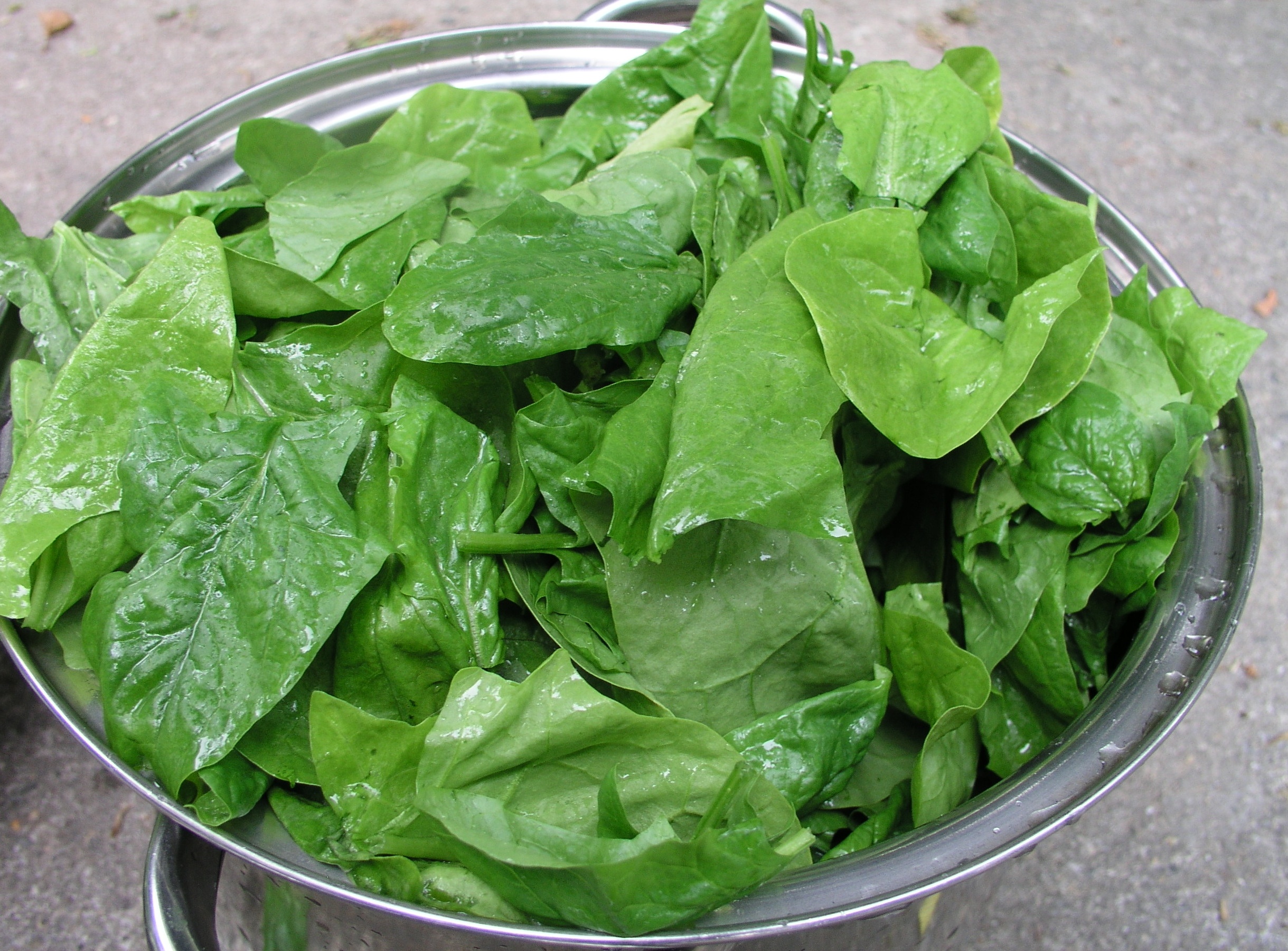|
Sinanglay
''Sinanglay'' is a Filipino dish made from stuffed fish wrapped in leafy vegetables and lemongrass or pandan leaves cooked in a spicy coconut milk sauce. It is a type of ''ginataan'' and originates from the Bicol Region. Description The fish is stuffed with a mixture of spices and vegetables. The stuffing typically include onions, scallions, garlic, tomatoes, and ''siling haba'' chilis. It is then wrapped in large leafy vegetables, usually pechay, mustard greens, taro leaves, or cabbage and tied with strips of pandan leaves or lemongrass. It is added to a stew made from coconut milk or coconut cream spiced with ginger (or turmeric), black pepper, '' patis'' (fish sauce) or ''bagoong alamang'' (shrimp paste), salt, labuyo chilis, and a souring agent (usually tamarind, calamansi, or bilimbi). The dish is simmered for around ten to twenty minutes, stirring occasionally to prevent the coconut milk from curdling. Prawns or shrimp may sometimes be added to enhance the flavor. It ... [...More Info...] [...Related Items...] OR: [Wikipedia] [Google] [Baidu] |
Ginataang Isda
''Ginataang isda'' is a Filipino fish stew made from Fish as food, fish and leafy vegetables in coconut milk with garlic, ginger, onion, ''patis (sauce), patis'' (fish sauce) or ''bagoong alamang'' (shrimp paste), and salt and pepper. It is a type of ''ginataan''. A common version of the dish, known as ''ginataang paksiw na isda'' or ''paksiw na isda sa gata'', is additionally soured with vinegar (a cooking method known as ''paksiw''). ''Ginataang isda'' is a type of ''ginataan''. Names ''Ginataang isda'' is a more generalized name meaning "fish in coconut milk". It is more common, however, to name the dish based on the type of fish used. The typical fish used in ''ginataang isda'' include: ''ginataang tilapia'' (tilapia), ''ginataang tambakol'' (yellowfin tuna), ''ginataang galunggong'' (blackfin scad), and ''ginataang tulingan'' (skipjack tuna). Description Aside from fish, the secondary ingredient of ''ginataang isda'' are leafy vegetables. These are most commonly ''pechay'', ... [...More Info...] [...Related Items...] OR: [Wikipedia] [Google] [Baidu] |
Laing (food)
''Laing'' ( ), is a Philippine cuisine, Filipino dish of shredded or whole taro leaves with meat or seafood cooked in thick coconut milk spiced with siling labuyo, labuyo chili, lemongrass, garlic, shallots, ginger, and bagoong alamang, shrimp paste. It originates from the Bicol Region, where it is known simply as ''pinangat''. ''Laing'' is also a type of ''ginataan'' (Filipino dishes cooked in coconut milk), and thus may also be referred to as ''ginataang laing''. ''Laing'' is commonly eaten as a vegetable side to complement meat or fish side dishes known as ''ulam'' in Filipino language, Filipino, which is normally paired with boiled white rice. Names ''Laing'', meaning "dried or withered [leaves]" in Tagalog language, Tagalog, is the name of the dish in most parts of the Philippines. However, in the Bicol region, where it originates from, it is simply called ''pinangat.'' This name can be confused with ''pinangat na isda'', which is a different dish made with fish cooked in ... [...More Info...] [...Related Items...] OR: [Wikipedia] [Google] [Baidu] |
Philippines
The Philippines, officially the Republic of the Philippines, is an Archipelagic state, archipelagic country in Southeast Asia. Located in the western Pacific Ocean, it consists of List of islands of the Philippines, 7,641 islands, with a total area of roughly 300,000 square kilometers, which are broadly categorized in Island groups of the Philippines, three main geographical divisions from north to south: Luzon, Visayas, and Mindanao. With a population of over 110 million, it is the world's List of countries and dependencies by population, twelfth-most-populous country. The Philippines is bounded by the South China Sea to the west, the Philippine Sea to the east, and the Celebes Sea to the south. It shares maritime borders with Taiwan to the north, Japan to the northeast, Palau to the east and southeast, Indonesia to the south, Malaysia to the southwest, Vietnam to the west, and China to the northwest. It has Ethnic groups in the Philippines, diverse ethnicities and Culture o ... [...More Info...] [...Related Items...] OR: [Wikipedia] [Google] [Baidu] |
Leafy Vegetables
Leaf vegetables, also called leafy greens, vegetable greens, or simply greens, are plant leaves eaten as a vegetable, sometimes accompanied by their petioles and shoots, if tender. Leaf vegetables eaten raw in a salad can be called salad greens, whereas leaf vegetables eaten cooked can be called pot herbs. Nearly one thousand species of plants with edible leaves are known. Leaf vegetables most often come from short-lived herbaceous plants, such as lettuce and spinach. Woody plants of various species also provide edible leaves. The leaves of many fodder crops are also edible for humans, but are usually only eaten under famine conditions. Examples include alfalfa, clover, and most grasses, including wheat and barley. Food processing, such as drying and grinding into powder or pulping and pressing for juice, may involve these crop leaves in a diet. Leaf vegetables contain many typical plant nutrients, but their vitamin K levels are particularly notable since they are photosyn ... [...More Info...] [...Related Items...] OR: [Wikipedia] [Google] [Baidu] |
Turmeric
Turmeric (), or ''Curcuma longa'' (), is a flowering plant in the ginger family Zingiberaceae. It is a perennial, rhizomatous, herbaceous plant native to the Indian subcontinent and Southeast Asia that requires temperatures between and high annual rainfall to thrive. Plants are gathered each year for their rhizomes, some for propagation in the following season and some for consumption or dyeing. The rhizomes can be used fresh, but they are often boiled in water and dried, after which they are ground into a deep orange-yellow shelf-stable spice powder commonly used as a coloring and flavoring agent in many Asian cuisines, especially for curries ( curry powder). Turmeric powder has a warm, bitter, black pepper-like flavor and earthy, mustard-like aroma. Although long used in Ayurvedic medicine, there is no high-quality clinical evidence that consuming turmeric or the principal turmeric constituent, curcumin, is effective for treating any disease. Curcumin, a bright ye ... [...More Info...] [...Related Items...] OR: [Wikipedia] [Google] [Baidu] |
Ginger
Ginger (''Zingiber officinale'') is a flowering plant whose rhizome, ginger root or ginger, is widely used as a spice and a folk medicine. It is an herbaceous perennial that grows annual pseudostems (false stems made of the rolled bases of leaves) about one meter tall, bearing narrow leaf blades. The inflorescences bear flowers having pale yellow petals with purple edges, and arise directly from the rhizome on separate shoot (botany), shoots. Ginger is in the family (taxonomy), family Zingiberaceae, which also includes turmeric (''Curcuma longa''), cardamom (''Elettaria cardamomum''), and galangal. Ginger originated in Maritime Southeast Asia and was likely domesticated first by the Austronesian peoples. It was transported with them throughout the Indo-Pacific during the Austronesian expansion ( Before Present, BP), reaching as far as Hawaii. Ginger is one of the first spices to have been exported from Asia, arriving in Europe with the spice trade, and was used by ancient Gre ... [...More Info...] [...Related Items...] OR: [Wikipedia] [Google] [Baidu] |
Coconut Cream
Coconut milk is a plant milk extracted from the grated pulp of mature coconuts. The opacity and rich taste of the milky-white liquid are due to its high oil content, most of which is saturated fat. Coconut milk is a traditional food ingredient used in Southeast Asia, Oceania, South Asia, and East Africa. It is also used for cooking in the Caribbean, Central America, northern parts of South America and West Africa, where coconuts were introduced during the colonial era. Coconut milk is differentiated into subtypes based on fat content. They can be generalized into coconut cream (or thick coconut milk) with the highest amount of fat; coconut milk (or thin coconut milk) with a maximum of around 20% fat; and coconut skim milk with negligible amounts of fat. This terminology is not always followed in commercial coconut milk sold in Western countries. Coconut milk can also be used to produce milk substitutes (differentiated as "coconut milk beverages"). These products are not the s ... [...More Info...] [...Related Items...] OR: [Wikipedia] [Google] [Baidu] |
Mustard Green
''Brassica juncea'', commonly mustard greens, brown mustard, Chinese mustard, Indian mustard, Korean green mustard, leaf mustard, Oriental mustard and vegetable mustard, is a species of mustard plant. Cultivar ''Brassica juncea'' cultivars can be divided into four major subgroups: integrifolia, juncea, napiformis, and tsatsai. Integrifolia Juncea Napiformis Tsatsai Uses Nutrition In a reference serving, cooked mustard greens provide of food energy and are a rich source (20% or more of the Daily Value) of vitamins A, C, and K—K being especially high as a multiple of its Daily Value. Mustard greens are a moderate source of vitamin E and calcium. Greens are 92% water, 4.5% carbohydrates, 2.6% protein and 0.5% fat (table). Cuisine The leaves, seeds, and stems of this mustard variety are edible. The plant appears in some form in African, Bangladeshi, Chinese, Filipino, Tripuri, Italian, Indian, Japanese, Okinawan, Nepali, Pakistani, Kor ... [...More Info...] [...Related Items...] OR: [Wikipedia] [Google] [Baidu] |
Leafy Vegetable
Leaf vegetables, also called leafy greens, vegetable greens, or simply greens, are plant leaves eaten as a vegetable, sometimes accompanied by their petioles and shoots, if tender. Leaf vegetables eaten raw in a salad can be called salad greens, whereas leaf vegetables eaten cooked can be called pot herbs. Nearly one thousand species of plants with edible leaves are known. Leaf vegetables most often come from short-lived herbaceous plants, such as lettuce and spinach. Woody plants of various species also provide edible leaves. The leaves of many fodder crops are also edible for humans, but are usually only eaten under famine conditions. Examples include alfalfa, clover, and most grasses, including wheat and barley. Food processing, such as drying and grinding into powder or pulping and pressing for juice, may involve these crop leaves in a diet. Leaf vegetables contain many typical plant nutrients, but their vitamin K levels are particularly notable since they are photosyn ... [...More Info...] [...Related Items...] OR: [Wikipedia] [Google] [Baidu] |
Siling Haba
''Siling haba'' ("long chili"), ''espada'' ("sword" in Spanish), ''siling mahaba'', ''siling pangsigang'' ("chili for ''sinigang''"), ''siling Tagalog'' ("Tagalog chili"), and sometimes called green chili, finger chili or long pepper, is one of two kinds of chili common to the Philippines and Filipino cuisine, the other being '' siling labuyo''. Unlike ''siling labuyo'', it belongs to the species ''Capsicum annuum''. The ''siling haba'' fruit grows to between long, and is bright light green in color. While of moderate spiciness, it is much milder and less hot than ''siling labuyo''. It is an ingredient commonly used in Philippine cuisine, spicing up dishes like sinigang, dinuguan, pinangat, kilawin, paksiw, and sisig. See also *Bird's eye chili Bird's eye chili or Thai chili ( owing to its shape) is a chili pepper variety (botany), variety from the species ''Capsicum annuum'' that is native to Mexico. Cultivated across Southeast Asia, it is used extensively in many Asian ... [...More Info...] [...Related Items...] OR: [Wikipedia] [Google] [Baidu] |







